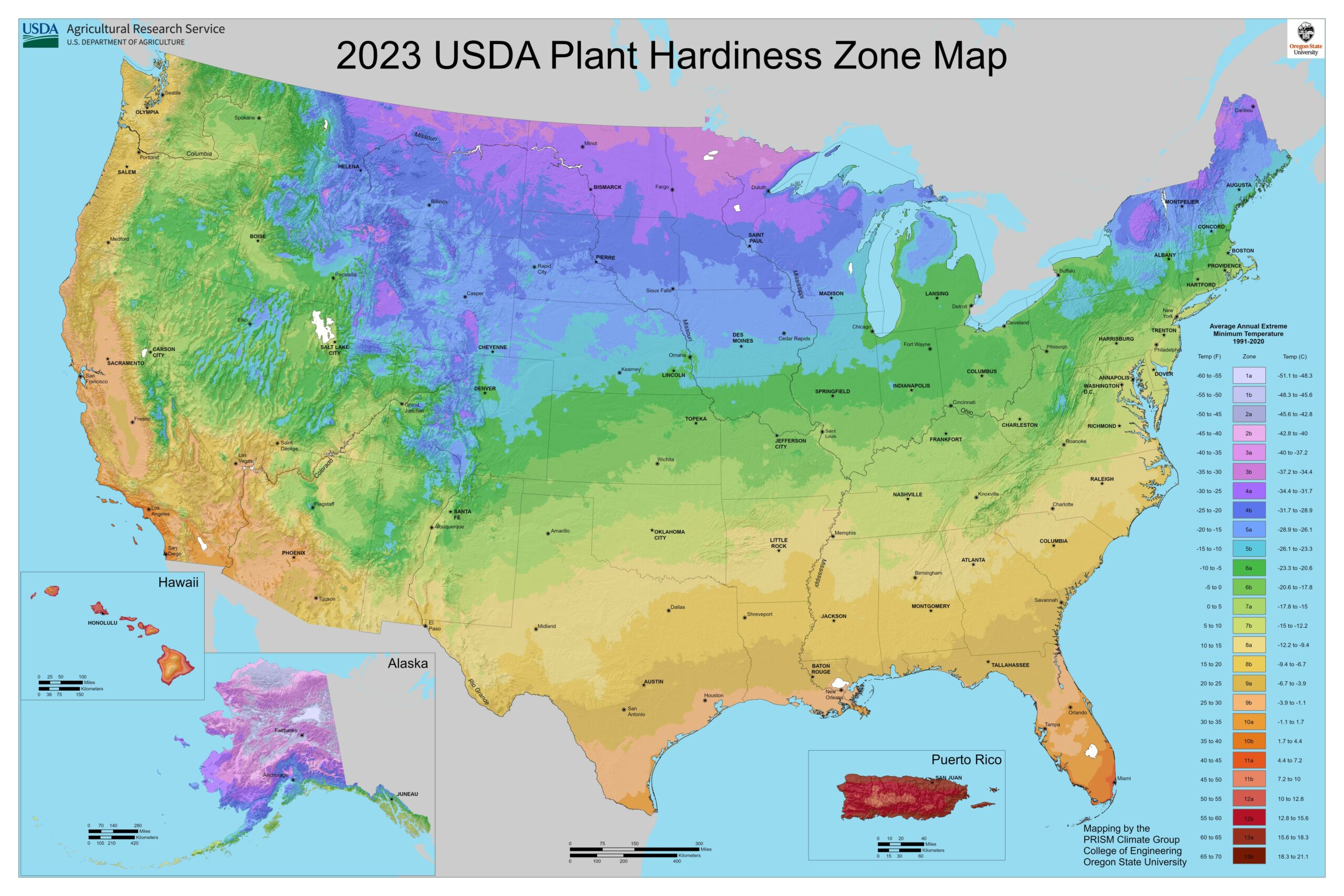Hardiness zones
The USDA Hardiness Zones are a standard by which gardeners and growers can determine which plants are most likely to thrive at a location. These zones, devised by the United States Department of Agriculture (USDA), divide North America into 13 distinct areas based on their average annual minimum winter temperature, divided into 10-degree Fahrenheit intervals. The system, first published in 1960 and updated periodically, serves as an essential guide for farmers, horticulturists, and home gardeners to select plants suited to their regional climates.
What zone am I in?
To find out what zone you are in, use our tool. Enter the name of your city and select the state, or enter your city’s zip code. Another way to find out which zone you’re in is to look up where you live on the official USDA map and read the map to get your zone.
Each zone is further divided into subzones labeled “a” and “b,” representing 5-degree Fahrenheit increments. For instance, Zone 6a indicates an average annual minimum temperature of -10 to -5 degrees Fahrenheit, while Zone 6b signifies -5 to 0 degrees. These precise distinctions help in selecting plants that can withstand the coldest temperatures experienced in that zone.
The USDA Hardiness Zones provide critical insights for planning gardens and agricultural activities, enabling better crop success and sustainability. Understanding these zones helps mitigate risks associated with extreme weather and ensures the optimal growth and survival of plants. Whether you’re cultivating flowers, vegetables, or trees, knowing your specific hardiness zone is the first step towards a flourishing garden or farm.
What can the zones be used for?
You can use the zones to plan the planting season. Different zones have different minimum annual temperatures. This means you can start the planting season as soon as you plant your seeds indoors. Once the temperature warms up you can plant the seedlings. With the help of our planner, you can maximise the planting season to get the best possible harvest.
What are the zones?
The zones with the most populated cities can be found below. Each title represents the zone name and the annual minimum temperature for that zone.
